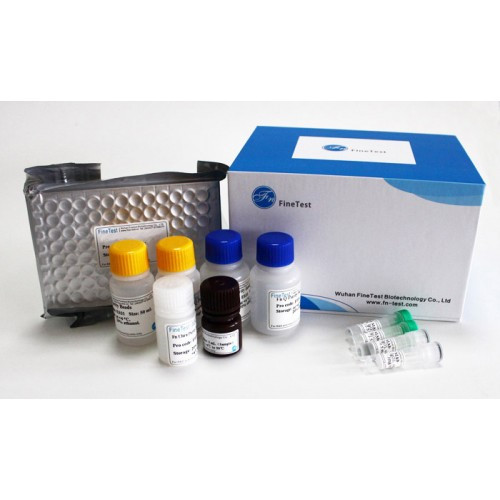Product Description
Recombinant Mouse Survival motor neuron protein (Smn1) is available at Gentaur for Next week Delivery.
Gene Name: Smn1
Alternative Names : Smn
Expression Region : 1-288aa
AA Sequence : MAMGSGGAGSEQEDTVLFRRGTGQSDDSDIWDDTALIKAYDKAVASFKHALKNGDICETPDKPKGTARRKPAKKNKSQKKNATTPLKQWKVGDKCSAVWSEDGCIYPATITSIDFKRETCVVVYTGYGNREEQNLSDLLSPTCEVANSTEQNTQENESQVSTDDSEHSSRSLRSKAHSKSKAAPWTSFLPPPPPMPGSGLGPGKPGLKFNGPPPPPPLPPPPFLPCWMPPFPSGPPIIPPPPPISPDCLDDTDALGSMLISWYMSGYHTGYYMGFRQNKKEGKCSHTN
Sequence Info : Full Length
Tag Info : N-terminal 10xHis-tagged and C-terminal Myc-tagged
Theoretical MW : 35.3 kDa
Storage Buffer : Tris/PBS-based buffer, 5%-50% glycerol. If the delivery form is lyophilized powder, the buffer before lyophilization is Tris/PBS-based buffer, 6% Trehalose, pH 8.0.
Endotoxin Level : Not tested-
Biological Activity : Not tested
Storage : Short term: -20°C; Long term: -80°C. Minimize freeze and thaw cycles.
Research Area : Neuroscience
Restriction : For Research Use Only. Not for use in diagnostic procedures, drug use, or for administration to humans or animals.
Relevance : The SMN complex plays a catalyst role in the assembly of small nuclear ribonucleoproteins (snRNPs), the building blocks of the spliceosome. Thereby, plays an important role in the splicing of cellular pre-mRNAs. Most spliceosomal snRNPs contain a common set of Sm proteins SNRPB, SNRPD1, SNRPD2, SNRPD3, SNRPE, SNRPF and SNRPG that assemble in a heptameric protein ring on the Sm site of the small nuclear RNA to form the core snRNP. In the cytosol, the Sm proteins SNRPD1, SNRPD2, SNRPE, SNRPF and SNRPG are trapped in an inactive 6S pICln-Sm complex by the chaperone CLNS1A that controls the assembly of the core snRNP. Dissociation by the SMN complex of CLNS1A from the trapped Sm proteins and their transfer to an SMN-Sm complex triggers the assembly of core snRNPs and their transport to the nucleus. Ensures the correct splicing of U12 intron-containing genes that may be important for normal motor and proprioceptive neurons development. Also required for resolving RNA-DNA hybrids created by RNA polymerase II, that form R-loop in transcription terminal regions, an important step in proper transcription termination. May also play a role in the metabolism of small nucleolar ribonucleoprotein
Function : The SMN complex plays a catalyst role in the assembly of small nuclear ribonucleoproteins (snRNPs), the building blocks of the spliceosome. Thereby, plays an important role in the splicing of cellular pre-mRNAs. Most spliceosomal snRNPs contain a common set of Sm proteins SNRPB, SNRPD1, SNRPD2, SNRPD3, SNRPE, SNRPF and SNRPG that assemble in a heptameric protein ring on the Sm site of the small nuclear RNA to form the core snRNP. In the cytosol, the Sm proteins SNRPD1, SNRPD2, SNRPE, SNRPF and SNRPG are trapped in an inactive 6S pICln-Sm complex by the chaperone CLNS1A that controls the assembly of the core snRNP. Dissociation by the SMN complex of CLNS1A from the trapped Sm proteins and their transfer to an SMN-Sm complex triggers the assembly of core snRNPs and their transport to the nucleus. Ensures the correct splicing of U12 intron-containing genes that may be important for normal motor and proprioceptive neurons development. Also required for resolving RNA-DNA hybrids created by RNA polymerase II, that form R-loop in transcription terminal regions, an important step in proper transcription termination. May also play a role in the metabolism of small nucleolar ribonucleoprotein (snoRNPs).
Involvement in disease :
Subcellular location : Nucleus, gem, Nucleus, Cajal body, Cytoplasm, Cytoplasmic granule, Perikaryon, Cell projection, Cytoplasm, myofibril, sarcomere, Z line
Protein Families : SMN family
Tissue Specificity :
Paythway :
Uniprot ID : P97801
 Euro
Euro
 British Pound
British Pound
 US Dollar
US Dollar








